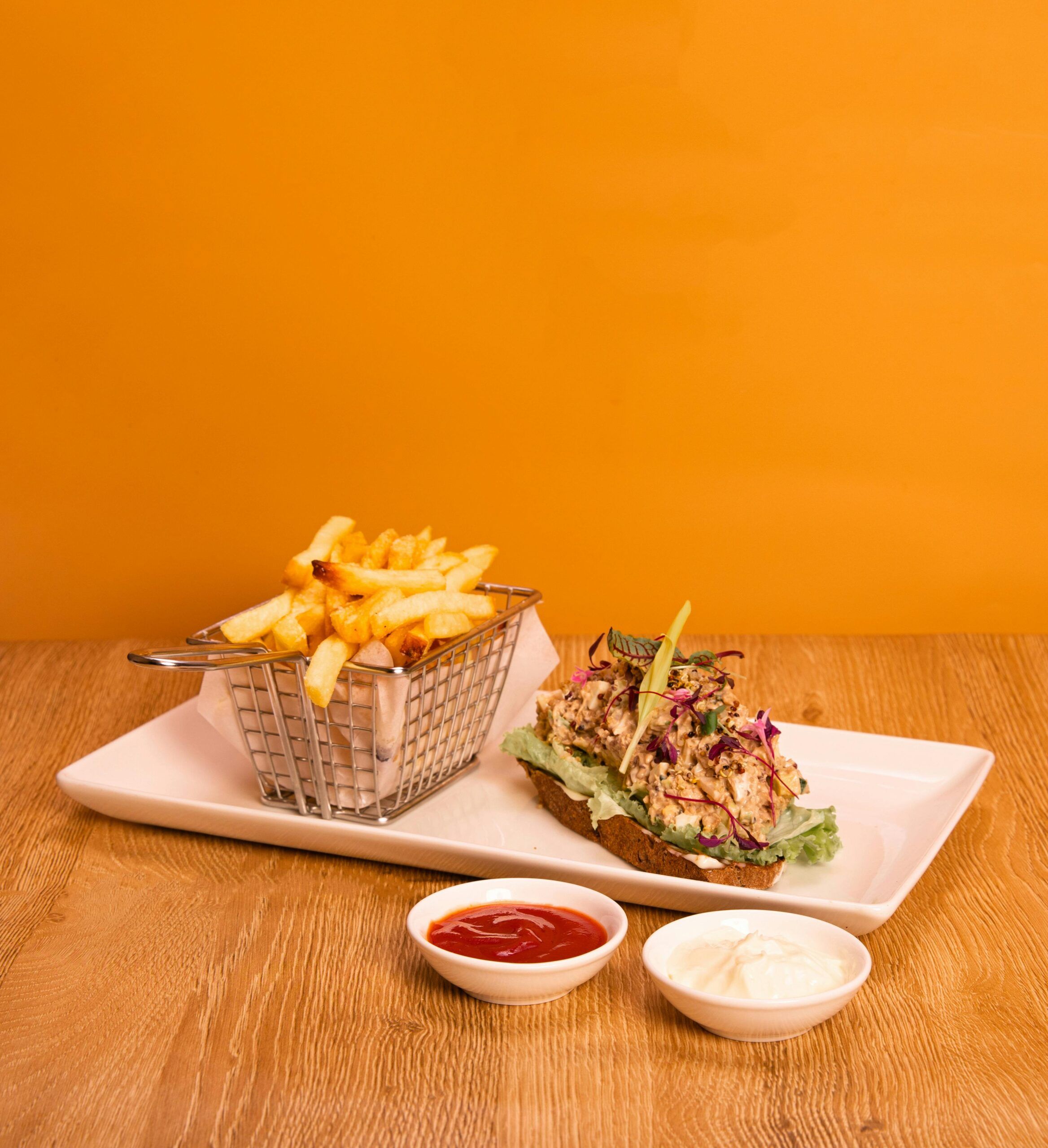- Understanding The Basics Of Menu Management
- Essential Choices While Crafting Your Menu
- Pricing Strategies For Optimal Profitability
- Implementing Technology In Menu Management
- Menu Optimization Techniques
- Training Staff For Consistent Execution
- Measuring Success And Making Adjustments
- Summing Up: Move Forward with Strategic Menu Management
- FAQ
Welcome, Restaurant Owners! Are you looking to transform your menu into a dynamic asset that drives growth? Effective menu management is a crucial strategy that can dramatically improve your restaurant’s appeal and profitability.
- Core Idea: Your menu is much more than a list of options—it’s a pivotal element that shapes your restaurant’s identity and influences customer decisions.
- Purpose: Skillfully managed menus can captivate diners, optimize your operations, and significantly improve your bottom line.
Key Takeaways
- Strategic use of market research tools and competitive analysis can significantly influence the relevance and appeal of your menu.
- Careful crafting of your menu involves thoughtful layout, inclusion of dietary options, and regular updates to meet changing customer preferences.
- Implementing technology, like Orders.co, streamlines menu management across platforms, ensuring consistency and reducing errors.
- Regularly optimize your menu by analyzing sales data and customer feedback to keep your offerings fresh and exciting.
- Empower your staff with thorough training and updated information to ensure consistent and high-quality customer service.
- Continuously measure your menu’s performance using detailed analytics to make informed adjustments for ongoing improvement.
At Orders.co, we understand the challenges of syncing and updating menus across multiple platforms. That’s why we’re here to simplify the process, making it seamless to maintain consistency and accuracy across all your service channels.
Let’s see how you can refine your menu management strategies, ensuring they work as hard as you do.
Understanding The Basics Of Menu Management
Menu management involves more than just selecting which dishes to serve. It’s about creating a cohesive experience that aligns with your restaurant’s brand, satisfies customer expectations, and drives profitability. 85% of customers check the menu online before choosing a new restaurant.
Here’s what you need to know to master this essential skill:
- The importance of menu management: At its core, it is the strategic planning, designing, updating, and maintaining of your restaurant’s menu. It’s a balance of culinary creativity and business acumen.
- Goals: The ultimate goal is twofold: raise customer satisfaction and maximize profits. This involves careful selection of dishes based on cost, popularity, seasonality, effective pricing strategies, and regular updates to keep the menu fresh and exciting.
Implementing robust menu management practices can transform an ordinary menu into a standout feature that pulls diners in and keeps them coming back.
Whether crafting your first menu or looking to revamp an existing one, starting with these fundamentals will set you on the path to success.
Strategic Planning For Menu Development
Let’s talk strategic planning—it’s the first menu management tip, the backbone of crafting a menu that doesn’t just draw people in but keeps them coming back for more. Ready to dive in?
Here’s how you can get started:
Market Research Tools: Ever wonder what your customers are really thinking? Tap into tools like customer surveys, feedback forms, and social media analytics. It’s like having a direct line to your diner’s desires and preferences. Use this goldmine of information to shape a menu that resonates well with your audience.
Tip: Orders.co’s analytics feature, you gain even deeper insights by tracking how different items perform. This lets you tweak your menu based on real data, ensuring your offerings always align with customer tastes and trends.
Competitive Analysis: And don’t forget about keeping an eye on the competition. Monitors what other local spots are up to so you can stay one step ahead.
See a trend you’re missing? Or maybe there’s a niche they haven’t explored? Either way, knowledge is power when setting your menu apart.
This strategy is all about making your menu the reason customers choose you again and again.
Let’s make your menu a standout star!
Also read:
- How to Optimize Your Restaurant’s Online Menu
- 7 Ways to Write Mouth-Watering Menu Descriptions
- 9 Restaurant Menu Design Tips That Will Help You Boost Profits
- The Ultimate Guide to Selecting a Restaurant Menu Management System
- 5 Must-Have Tools to Simplify Your Restaurant Operations
Essential Choices While Crafting Your Menu
It’s time to put those insights into action and craft a menu that tells your restaurant’s story.
Here’s how to make sure your menu not only looks good but also meets the diverse needs of your customers:
Menu Design Principles
Think about the layout—how you arrange your menu can influence your customers’ buying decisions. Make sure it’s easy to read and visually appealing, using colors and fonts that reflect your restaurant’s brand and atmosphere.
Each section should be clearly defined, making it easy for customers to find what they want.
| Menu Structure Component | Essentials and Recommendations |
| Clear Categories | – Organize dishes into logical categories (e.g., Starters, Mains, Desserts, Beverages).- Ensure each category is easily distinguishable to speed up the decision-making process. |
| Descriptive Titles | – Use concise and descriptive titles that accurately reflect the dish.- Consider including key ingredients to help diners understand what to expect. |
| Item Descriptions | – Keep descriptions short but informative.- Highlight unique ingredients or preparation methods that set your dishes apart. |
| Pricing | – Clearly display prices next to each menu item.- Consider the layout to ensure prices are easy to find but do not dominate the experience. |
| Visual Elements | – Incorporate high-quality photos sparingly to showcase signature dishes.- Use visual cues like icons to indicate spicy dishes, vegan options, or popular choices. |
| Special Diets | – Clearly mark items that cater to special dietary needs (e.g., gluten-free, nut-free, vegan).- Provide a separate section or menu for allergen-free options if possible. |
| Seasonal and Special Offers | – Highlight seasonal dishes or specials to encourage trial.- Use design elements like borders or shading to make these items stand out. |
| Language and Tone | – Ensure the language matches the ambiance and target demographic of the restaurant.- Use a tone that matches the dining experience, whether it’s formal, casual, or playful. |
| Legal Requirements | – Include necessary disclaimers for allergens.- Add any legally required information, such as advisories on raw or undercooked foods. |
| Contact and Ordering Information | – For digital or takeaway menus, include contact information and clear instructions on how to order.- Provide QR codes for easy access to online menus or ordering platforms. |
Menu Item Selection
Balance is key here. Blend innovative dishes with tried-and-true favorites to cater to a wide range of tastes. More importantly, include options for people with dietary restrictions or allergies. Here’s a handy checklist to guide you in crafting an inclusive menu:
| Dietary Need | Substitutions and Recommendations |
| Gluten-Free Options | Substitute regular flour with almond, coconut, or oat flour. |
| Dairy-Free Alternatives | Offer almond milk, coconut milk, or soy-based products instead of traditional dairy. |
| Nut Allergies | Clearly label dishes that contain nuts or use seeds as alternatives where possible. |
| Vegan Varieties | Utilize tofu, tempeh, or jackfruit as substitutes for meat-based dishes. |
| Low-Carb Solutions | Replace standard pasta with zucchini noodles or offer cauliflower rice as an alternative to white rice. |
By carefully designing your menu and considering the dietary needs of your patrons, you create an inclusive dining experience that welcomes more customers into your restaurant.
Plus, a well-crafted menu becomes a powerful tool in enhancing customer satisfaction and driving repeat business.
Your Inbox, Your Rules!
Tailor your newsletter with the topics you're most interested in.
Pricing Strategies For Optimal Profitability
The next menu management tip is navigating the nuances of pricing can make a big difference in your restaurant’s bottom line. Let’s break down how to strategically set your menu prices to balance customer satisfaction with your profitability goals:
- Cost Calculation: Begin by understanding the true cost of each dish. Include all ingredients, labor, and overheads to determine a baseline. This transparency in costing ensures that your pricing reflects the actual investment in each menu item.
- Psychological Pricing Techniques: Implement pricing strategies that influence perception and encourage spending. Techniques such as charm pricing (ending prices with .99 or .95) or using round numbers for premium dishes can make your prices more attractive.
- Menu Layout and Pricing Placement: Strategically place high-margin items in prime spots on the menu to draw attention. Research shows that items placed at the beginning and end of a menu category are more likely to be chosen.
- Regular Review and Adjustment: As are your costs, the market is always changing. Regularly review your pricing strategy in response to feedback, sales data, and market trends to keep your menu optimally priced for current conditions.
By applying these pricing strategies, you ensure that your menu is appealing to customers and financially sustainable for your restaurant, creating a win-win situation that fosters long-term success.
Implementing Technology In Menu Management
Embracing technology is key to modernizing your restaurant’s menu management. Let’s explore how integrating the right tools can transform your operations:
Digital Tools and Software
Leveraging technology like Orders.co streamlines your menu management by instantly syncing updates across your own custom ordering website and third-party platforms such as DoorDash, Uber Eat, and GrubHub. Whether you’re managing a menu across different locations or adjusting for seasonal changes, technology ensures accuracy and efficiency.
Benefits of Integration
Integrating your menu management system with a point-of-sale (POS) system can significantly boost operational efficiency. This integration allows real-time updates and data insights, helping you make informed decisions quickly.
For example, using Orders.co keeps your menu consistent across online and physical platforms and provides analytics on menu performance, aiding in more intelligent business decisions.
Menu Optimization Techniques
Optimizing your menu is crucial for keeping your offerings fresh and aligned with customer preferences. Here’s how to keep your menu dynamic and engaging:
- Menu Reviews and Revisions: Regularly schedule reviews of your menu to assess the performance of each item. Use data from your POS system and customer feedback to determine which dishes are favorites and which are underperforming. This process helps you decide which items to keep, modify, or remove.
- Seasonal Adaptations: Embrace the changing seasons by incorporating seasonal ingredients that add flavor and optimize cost-efficiency. Seasonal menus can attract customers looking for fresh, timely dishes and create buzz around new menu launches.
- Strategies for Introducing New Dishes: When adding new items, consider doing small-scale testing during specific times or events to gauge customer interest before fully integrating them into the menu. This iterative approach allows you to refine dishes based on real-world feedback.
By continually refining your menu and adapting to data insights and customer trends, you maintain a vibrant and appealing dining experience that keeps patrons returning.
Training Staff For Consistent Execution
Ensuring that your staff is well-trained and knowledgeable about the menu is fundamental to delivering a consistent and high-quality dining experience.
Here’s how to effectively prepare your team:
| Training Component | Description and Purpose |
| Communication and Training | Implement comprehensive training sessions covering menu item details, the inspiration behind dishes, and presentation techniques. This helps staff convey the story and value of the dishes, enhancing the customer’s dining experience. |
| Service Excellence Checklist | Develop a checklist that outlines key service points, from greeting customers to describing menu items enthusiastically and accurately. This checklist serves as a go-to resource for staff to consistently meet expected service standards. |
| Regular Updates and Refreshers | Conduct regular sessions to update staff on new items or changes to existing dishes, ensuring all team members are informed and that customer interactions are accurate and current. |
| Role-playing Scenarios | Use role-playing exercises to simulate real dining situations, allowing staff to practice responding to customer inquiries and refine their upselling techniques. |
By investing in thorough training and ongoing education, you empower your staff to execute their roles effectively, contributing significantly to the overall success of your restaurant.
Measuring Success And Making Adjustments
The last menu management tip is ensuring your menu continues to meet and exceed customer expectations; it’s crucial to measure its success and make necessary adjustments. Here’s how you can effectively track and tweak your menu:
- Feedback Loops: Establish mechanisms to gather customer feedback directly, either through digital platforms or in person at the end of their dining experience. Use this valuable input to understand customer preferences and identify areas for improvement.
- Analytics Dashboard: Utilize Orders.co’s advanced analytics features to monitor how different dishes perform. This data allows you to see trends, such as which items are most popular and which are not meeting sales expectations, providing a clear basis for menu adjustments.
- Performance Metrics: Define key performance indicators (KPIs) such as sales by item, customer satisfaction scores, and profit margins. Regularly review these metrics to assess whether your menu is achieving its intended financial and customer service goals.
- Regular Audits: Schedule periodic reviews of your menu and operations to ensure alignment with your business objectives. These audits can help pinpoint inefficiencies and opportunities, leading to more informed decision-making about menu changes.
Summing Up: Move Forward With Strategic Menu Management

As we wrap up, remember that strategic menu management is pivotal to the success of your restaurant. It’s not just about having delicious dishes; it’s about smartly managing those dishes to align with your business goals and customer expectations.
Effective menu management increases customer satisfaction, boosts profitability, and streamlines operations. By applying the strategies we’ve discussed, from leveraging technology like Orders.co to conducting regular menu audits, you’re setting your restaurant up for success.
Don’t wait to start making these essential changes. Implement the insights and tools discussed here to transform your menu management today.
Direct Ordering Platform
Orders.co offers a personalized, direct ordering website that places you in full control of the customer ordering experience. This website is fine-tuned for both mobile and desktop use, efficiently capturing orders and valuable customer insights. Thanks to its streamlined ordering process, customers are inclined to place orders conveniently.
AI-Powered Marketing Tools
Leverage the power of Orders.co’s AI-driven restaurant marketing tools eliminate the complexity of email marketing personalization via AI assistant and automate the marketing workflow through SMS and Email, enhancing customer engagement and boosting order consistency.
Integrated Multichannel Order Management
The platform shines in its ability to manage online orders across multiple channels, including direct website orders, mobile app orders, and orders through third-party services.
By consolidating these various sources, Orders.co increases operational efficiency, minimizes errors and accelerates service delivery. This integration leads to more streamlined operations and an improved customer experience.
Loyalty Rewards Program
Encourage repeat business with Orders.co’s points-based loyalty reward program, designed for better customer retention. Customers accumulate points with each purchase, redeemable for discounts or complimentary items as set by your restaurant.
They receive updates upon earning points and reminders to redeem them before expiration, fostering frequent visits and increased spending.
Essential Analytics & Reporting
With Orders.co, gain access to reporting detailing your restaurant’s operational performance, including popular dishes and the busiest hours on each 3rd party platform as well as your own website.
This rich data set helps you refine your marketing tactics dynamically, enabling informed decisions that support your restaurant’s growth objectives and boost profitability.
Guest Feedback System
Stay on top of customer feedback with Orders.co’s Guest Feedback Monitoring tool, which alerts you via email about any negative reviews. Prompt responses to these alerts help you address and resolve issues quickly, showing your dedication to customer satisfaction. Besides, the system drives the customer with positive feedback to leave reviews on large platforms such as Yelp.
Proactively managing feedback can transform potential negatives into opportunities to strengthen customer loyalty and enhance guest experiences.
Discover the Impact of Orders.co
Interested in seeing how Orders.co can specifically help streamline your processes?
Schedule a free demo with us today and explore how Orders.co can enhance customer retention, increase loyalty, and streamline your operations.
FAQ
Can you recommend specific tools of management in food service that integrate with existing systems?
Many comprehensive tools integrate well with existing systems, including Orders.co, which offers seamless integration with various POS systems, enhancing overall efficiency in managing your restaurant’s operations.
Why is menu management considered crucial for a restaurant’s success?
Menu management is crucial because it directly affects customer satisfaction, restaurant efficiency, and profitability. A well-managed menu can attract more customers, ensure smoother operations, and increase sales.
What should I look for in restaurant menu management software?
When choosing restaurant menu management software, look for features like real-time updating, multi-platform synchronization, detailed analytics, and user-friendly interfaces. Ensure the software supports comprehensive management needs and is scalable as your business grows.
How often should I revise my restaurant’s menu to maintain its relevance?
It’s advisable to review your menu periodically, such as seasonally or annually, to ensure it aligns with customer preferences, seasonal ingredient availability, and current culinary trends. Frequent reviews allow you to adjust and optimize your offerings effectively.
What are the signs that my menu needs updating?
Signs that suggest it’s time to update your menu include declining sales of certain dishes, customer feedback indicating a desire for new options or changes, and seasonal changes that affect the availability of ingredients.
How can menu management tips help in reducing food waste in restaurants?
Effective menu management can help reduce food waste by allowing for better inventory tracking, optimizing dish popularity through data analytics, and adjusting portion sizes based on customer consumption patterns.
What role does technology play in enhancing menu management in modern restaurants?
Technology plays a crucial role by providing tools that offer real-time data analysis, automate inventory and order management, and enhance customer engagement through personalized marketing and feedback channels.
Can menu management impact the labor costs in a restaurant?
Yes, efficient menu management can streamline kitchen operations, reduce the need for excess staff during slower periods, and optimize preparation and cooking times, thereby impacting labor costs positively.
What are the best practices for using restaurant menu management software to improve profitability?
Best practices include utilizing software analytics to track dish performance and customer preferences, using forecasting tools to better manage inventory and reduce waste, and leveraging marketing features within the software to promote high-margin dishes.










